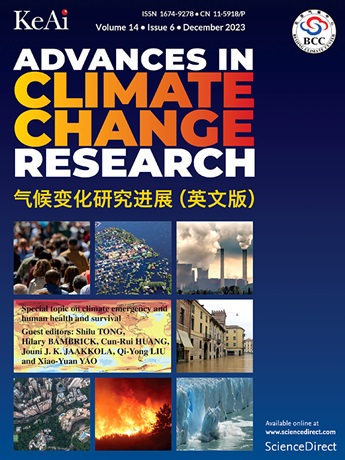Understanding water flowpaths and origins in an Arctic Alaskan basin: Implications for permafrost hydrology under global warming
IF 5.2
1区 地球科学
Q1 ENVIRONMENTAL SCIENCES
引用次数: 0
Abstract
Global warming is progressing more rapidly in the Arctic compared with other regions of the world, and the increasing temperature has caused gradual permafrost thaw, resulting in significant changes in hydrological processes. However, the quantitative contributions of different water sources to Arctic watersheds under ongoing climate change remain poorly understood. Therefore, this study aims to address this gap by applying a water isotope-based mixing model to better quantify the sources and pathways of water flow in permafrost-affected catchments. In this study, isotopic and chemical data were used to determine the water sources and flowpaths of the Sagavanirktok (Sag) River on the North Slope in Alaska (USA) in the summer of 2022. Results obtained using a Bayesian mixing model indicate that meltwater from permafrost ice wedges contributes 17.7% upstream and 22.2% downstream to the Sag River. At the upstream with a frozen active layer or transient layer (including seasonal intrasediment ice), lower active layer water (mineral-rich) and upper active layer water (organic-rich) accounted for 31.5% and 18.1%, respectively. By contrast, at the downstream, the contribution of active layer water was 26.9%, which was similar to that of the other sources. The sources and flowpaths of Arctic freshwater affect changes in the geochemical characteristics of the freshwater, which is channeled to the Arctic Ocean through major Arctic rivers. This study quantitatively assesses permafrost ice wedge melt in an Arctic basin and provides insights to facilitate investigations of hydrological processes and geochemical changes associated with climate change in Arctic water systems.
了解北极阿拉斯加盆地的水流路径和起源:全球变暖对永久冻土水文的影响
与世界其他地区相比,全球变暖在北极的发展速度更快,气温上升导致永久冻土逐渐融化,导致水文过程发生重大变化。然而,在持续的气候变化下,不同水源对北极流域的定量贡献仍然知之甚少。因此,本研究旨在通过应用基于水同位素的混合模型来解决这一空白,以更好地量化受永久冻土影响的流域的水流来源和途径。在这项研究中,利用同位素和化学数据确定了2022年夏天美国阿拉斯加北坡Sagavanirktok(洼地)河的水源和水流路径。贝叶斯混合模型结果表明,多年冻土冰楔融水对凹陷河上游和下游的贡献分别为17.7%和22.2%。上游有冻结活跃层或瞬态层(含季节性沉积物内冰),下层活跃层水(富矿物质)和上层活跃层水(富有机物)分别占31.5%和18.1%。下游活动层水的贡献率为26.9%,与其他水源的贡献率相似。北极淡水的来源和流动路径影响着淡水地球化学特征的变化,这些淡水通过北极主要河流流入北冰洋。本研究定量评估了北极盆地的永久冻土冰楔融化,并为促进北极水系统中与气候变化相关的水文过程和地球化学变化的调查提供了见解。
本文章由计算机程序翻译,如有差异,请以英文原文为准。
求助全文
约1分钟内获得全文
求助全文
来源期刊

Advances in Climate Change Research
Earth and Planetary Sciences-Atmospheric Science
CiteScore
9.80
自引率
4.10%
发文量
424
审稿时长
107 days
期刊介绍:
Advances in Climate Change Research publishes scientific research and analyses on climate change and the interactions of climate change with society. This journal encompasses basic science and economic, social, and policy research, including studies on mitigation and adaptation to climate change.
Advances in Climate Change Research attempts to promote research in climate change and provide an impetus for the application of research achievements in numerous aspects, such as socioeconomic sustainable development, responses to the adaptation and mitigation of climate change, diplomatic negotiations of climate and environment policies, and the protection and exploitation of natural resources.
 求助内容:
求助内容: 应助结果提醒方式:
应助结果提醒方式:


